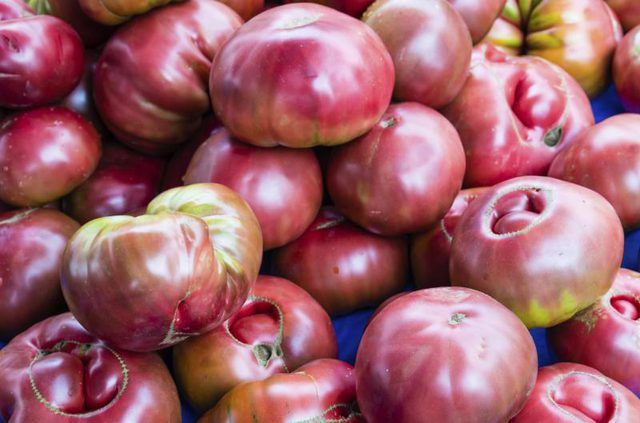Bulbs
Flower Basics
Flower Beds & Specialty Gardens
Flower Garden
Garden Furniture
Garden Gnomes
Garden Seeds
Garden Sheds
Garden Statues
Garden Tools & Supplies
Gardening Basics
Green & Organic
Groundcovers & Vines
Growing Annuals
Growing Basil
Growing Beans
Growing Berries
Growing Blueberries
Growing Cactus
Growing Corn
Growing Cotton
Growing Edibles
Growing Flowers
Growing Garlic
Growing Grapes
Growing Grass
Growing Herbs
Growing Jasmine
Growing Mint
Growing Mushrooms
Orchids
Growing Peanuts
Growing Perennials
Growing Plants
Growing Rosemary
Growing Roses
Growing Strawberries
Growing Sunflowers
Growing Thyme
Growing Tomatoes
Growing Tulips
Growing Vegetables
Herb Basics
Herb Garden
Indoor Growing
Landscaping Basics
Landscaping Patios
Landscaping Plants
Landscaping Shrubs
Landscaping Trees
Landscaping Walks & Pathways
Lawn Basics
Lawn Maintenance
Lawn Mowers
Lawn Ornaments
Lawn Planting
Lawn Tools
Outdoor Growing
Overall Landscape Planning
Pests, Weeds & Problems
Plant Basics
Rock Garden
Rose Garden
Shrubs
Soil
Specialty Gardens
Trees
Vegetable Garden
Yard Maintenance
How to Choose Tomato Varieties
How to Choose Tomato Varieties. Tomatoes (Solanum lycopersicum) are warm-weather plants producing fruits that range in color from green to black, orange, yellow and red. Hardy in U.S. Department of Agriculture zones 3 through 10, tomatoes are most commonly grown as annuals. Choosing the type of tomato to grow depends on space restrictions, the...

Tomatoes (Solanum lycopersicum) are warm-weather plants producing fruits that range in color from green to black, orange, yellow and red. Hardy in U.S. Department of Agriculture zones 3 through 10, tomatoes are most commonly grown as annuals. Choosing the type of tomato to grow depends on space restrictions, the length of your growing season and the tomato size you want. Tomatoes can be grown in-ground as well as in containers. All tomatoes require full sun and breeze-free locations. Keep the soil regularly moist.
Size and Color
While the classic tomato is large, round and red, tomatoes come in a range of shapes, sizes and colors. For many home gardeners, choosing how big you want your tomatoes to be and what color will be the first point of consideration. Beefsteak tomatoes -- large, round types, such as the SteakHouse Hybrid (Solanum lycopersicum "SteakHouse Hybrid") -- produce enormous fruits that weigh 1 1/2 to 3 pounds when mature. These are ideal for slicing for sandwiches or burgers. Smaller tomatoes, such as cherry tomatoes or plum tomatoes, including the Sun Gold Hybrid (Solanum lycopersicum "Sun Gold Hybrid"), produce small, round fruits that weigh no more than 1 ounce each. Because of their golden orange color, "Sun Gold Hybrids" are increasingly chosen by home gardener.
Determinate, Indeterminate and Semideterminate
The second point of consideration is choosing between determinate, indeterminate and semideterminate tomatoes. All tomato plants can be classified as one of these three types. Determinate plants have a set height, ending with a cluster of flowers at their terminal growing point. Indeterminate varieties, also known as vining tomatoes, do not have a set height and will continue growing vertically until the end of the growing season. Determinate tomatoes tend to ripen sooner than indeterminate tomatoes, but all of their fruit sets at once. Semideterminate tomatoes grow to 3 to 4 feet tall and have one main crop that ripens all at once, but they will continue producing smaller crops throughout the growing season.
While indeterminate tomatoes produce for the whole growing season, they set fruit later on in the summer. Choosing the type of tomato depends on if you use a large quantity of tomatoes all at once and if you have enough room to grow indeterminate tomatoes, which can reach 7 or 8 feet at the end of the growing season.
Containers and Care
Both determinate and indeterminate tomato plants require external support, although the shorter height of determinate tomatoes means you can often use cages for support. The sprawling growth habit of indeterminate tomatoes means that they need to be fully supported, using bamboo or wooden stakes to support their full height. Determinate tomatoes are better suited for the limited space of container gardens, and tomatoes can be successfully grown in containers.
You can also grow dwarf tomatoes, such as "Tiny Tim" (Solanum lycopersicum "Tiny Tim"), which are ready to harvest in 45 days. Ensure that containers have drainage holes and sufficient space per plant. At a minimum, plant tomatoes in a 12- by 12-inch pot, using a mix of potting soil, peat moss, compost and perlite. Do not use garden soil as it likely contains pests and possibly diseases. Container tomatoes, even determinate ones, need to be staked or caged to provide support as it grows.
Time to Maturity
While determinate tomatoes set fruit earlier in general, there are early-ripening varieties. These may make for a better choice if you are dealing with a very short growing season. First-early red tomatoes take 60 days or less to harvest. In the case of the "Sub Arctic Plenty" (Lycopersium solanum "Sub Arctic Plenty") and the Early Girl (Lycopersicum solanum "Early Girl"), tomatoes will be ready for harvest in 45 days and 54 days, respectively. Main-crop tomatoes develop throughout the growing season and won’t be ready for harvest until the fall after a spring planting. "Supersonic" (Lycopersicum solanum "Supersonic") will mature in 79 days. Extra-large varieties, as well as yellow-, orange-, pink- and white-colored tomatoes, tend to be main-crop tomatoes. The "White Wonder" (Lycopersicum solanum "White Wonder") is an example of a large-sized, white-colored tomato. It takes 85 days to harvest.